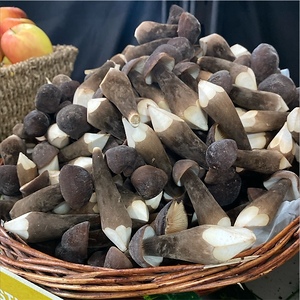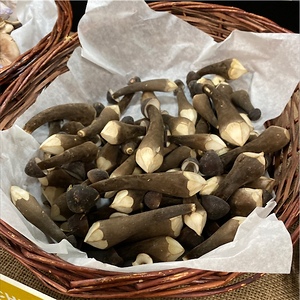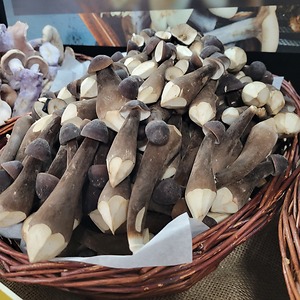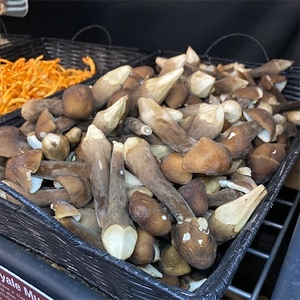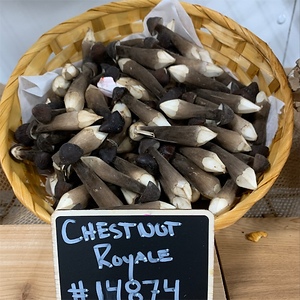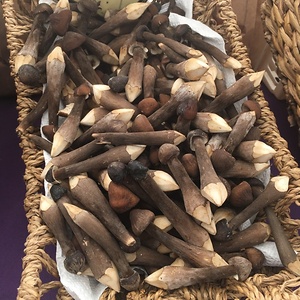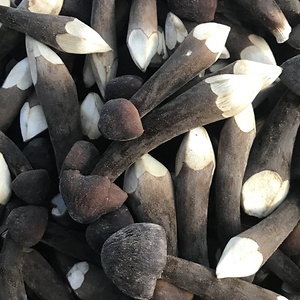

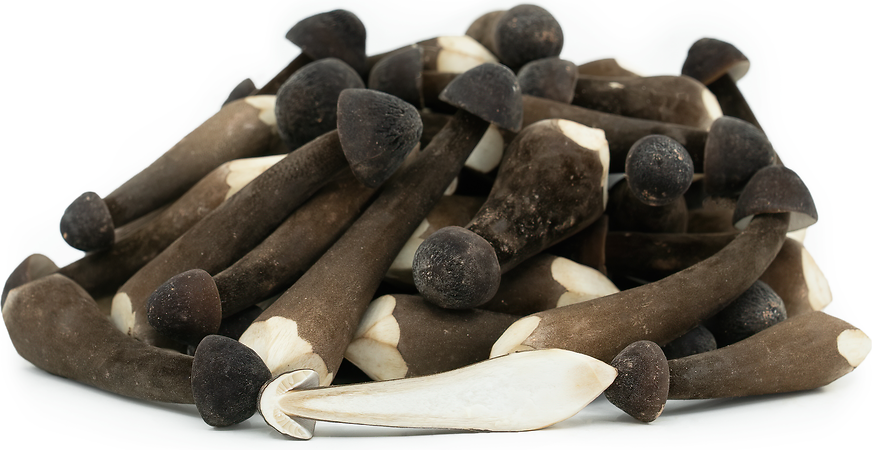
Chestnut Royale Mushrooms
Estimated Inventory, lb : 0
This item was last sold on : 03/07/25
Description/Taste
Chestnut Royale mushrooms are small to medium in size, grown as a single stem or in small groups, and have a convex cap that is attached to a thick, dense stem. The brown to grey-brown cap can grow 2-15 centimeters in diameter and is smooth, velvety, and slightly slimy when wet and young. As the mushroom ages, it will dry and become wrinkled. The gills underneath the cap are bright white to cream-colored and are evenly spaced connecting to the central, brown stem that narrows near the cap and averages 5-10 centimeters in length. Chestnut Royale mushrooms have a clean, woodsy aroma, a meaty texture, and when cooked, they have a rich, nutty, and mildly sweet flavor.
Seasons/Availability
Chestnut Royale mushrooms are available in the summer through fall.
Current Facts
Chestnut Royale mushrooms are often botanically classified as Oudemansiella Radicata, but the classification has been widely debated, and some recognize the mushroom as Xerula furfuacea. Chestnut Royale mushrooms can be both cultivated or foraged. When found in the wild, the mushroom grows from the forest floor, attached to underground wood and when commercially cultivated, the mushroom is grown in a mix of hardwood sawdust and grain substrate. Chestnut Royale mushrooms are favored by chefs and home cooks for their nutty flavor and substantial texture and are popularly used in soups, stews, and casseroles.
Nutritional Value
Chestnut Royale mushrooms contain selenium, copper, potassium, riboflavin, niacin, and vitamin D.
Applications
Chestnut Royale mushrooms are best suited for cooked applications such as sautéing and simmering. To prepare the mushroom, trim the bottom of the stem to remove any imperfections and if there is dirt on the cluster, use a dry brush or cloth to remove excess debris. It is best to avoid rinsing the mushrooms, as doing so will water down the flavor and create a soggy texture. Chestnut Royale mushrooms are slightly porous which lends itself well to absorbing surrounding flavors and sauces. They can be mixed into soups, sauces, stews, and casseroles, or cooked into pasta dishes such as tagliatelle, risotto, and stroganoff. They can also be baked into nut roast pie, quiches, and omelets. Chestnut Royale mushrooms pair well with fontina cheese, truffle oil, thyme, rosemary, spring onions, garlic, leafy greens, pomegranate seeds, cranberries, and meats such a sausage and chicken. They will keep up to three days when stored loosely in a paper bag in the refrigerator.
Ethnic/Cultural Info
When British botanist and mycologist Richard Relhan described this mushroom in 1785, he named it Agaricus radicatus as most of the gilled fungi were placed in a large genus named Agaricus at the time. Today, most of the Agaricus genus contents have been redistributed to many other genera. Due to appearance and growing habits, there has been much debate about where the Chestnut Royale mushroom should sit in the taxonomic system and has acquired many other scientific names over the past two hundred years. One of the current scientific names, Xerula radicata, dates from a 1995 publication by the German mycologist Heinrich Dörfelt.
Geography/History
Chestnut Royale mushrooms were first recorded in 1785, but their history is largely unknown and is believed to have been growing wild since ancient times. Today Chestnut Royale mushrooms can be found in the wild, at local markets, and specialty grocers in select regions of the United States, Europe, and Asia.
Recipe Ideas
Recipes that include Chestnut Royale Mushrooms. One
Podcast







